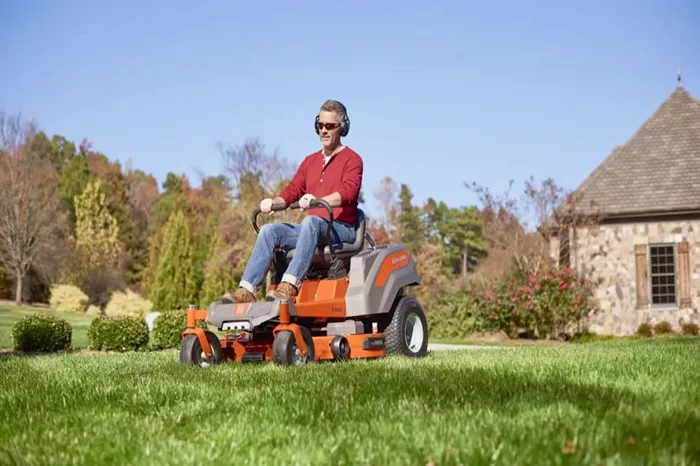Proper storage of your lawn mower is essential to ensure its longevity and optimal performance. Whether you’re looking for a space inside your home or a more outdoor-friendly solution, there are several storage options available to keep your mower safe from the elements and in good working condition. Here, we explore the best storage options for your lawn mower, along with helpful tips for preparation and safety considerations.
Best Storage Options for a Lawn Mower
Garage
Benefits
Storing your lawn mower in the garage offers protection from weather conditions like rain, snow, or extreme heat. It also provides easy access for frequent use, especially if you use your mower regularly during the lawn care season.
Tips
Ensure your garage is well-ventilated to prevent moisture buildup, which can lead to rust. Make sure the area is clutter-free and that the mower is stored in an accessible spot to prevent accidents or damage.
Shed
Benefits
A shed provides a dedicated space for garden tools and equipment, keeping your lawn mower separate from the rest of your living area. It also protects the mower from the elements and offers extra storage space for other gardening supplies.
Tips
Choose a shed with a solid foundation to ensure it stays level and secure. Look for sheds made with waterproof materials such as treated wood or metal to keep your mower dry and protected from the elements. Additionally, consider a lockable door to keep the mower safe from theft.
Basement
Benefits
A basement can offer a temperature-controlled environment that protects your mower from extreme weather conditions. This option is ideal for homeowners who want to store their lawn mower in a more stable environment during the off-season.
Tips
Make sure there is enough space to store the mower without cramping other items. You may want to use a ramp or hand truck to safely move the mower in and out of the basement, especially if stairs are involved. Also, ensure that the area is dry to avoid any potential mold or mildew growth.
Outdoor Storage
If you don’t have the space or resources for indoor storage, outdoor options are available.
Under a Tarp
Benefits: If indoor storage is not an option, covering your mower with a heavy-duty tarp can provide some protection from rain and dust. This option is best for short-term storage. Tips: Use a tarp that is large enough to cover the mower completely, and make sure the edges are secured to prevent wind from blowing it away.
Weatherproof Storage Box
Benefits: For long-term outdoor storage, a weatherproof storage box specifically designed for outdoor equipment is an excellent choice. These boxes are often made from durable materials like resin and provide superior protection from rain, sun, and pests. Tips: Ensure the box has proper ventilation to avoid moisture buildup inside. Look for one with a lock to enhance security.
Preparation for Storage
Before storing your lawn mower, it’s crucial to prepare it for hibernation to ensure it stays in good condition. Follow these steps for the best results:
Cleaning
Thoroughly clean the mower to remove grass clippings, dirt, and debris. Use a hose or a damp cloth to wipe down the exterior, and a brush to clean the underside of the mower.
Maintenance
Perform any necessary maintenance tasks, such as changing the oil, sharpening the blades, and checking the air filter. A well-maintained mower is more likely to function properly when you take it out of storage.
Fuel
Empty the fuel tank or add a fuel stabilizer to prevent the fuel from degrading over time. This is especially important if you’re storing the mower for several months.
Battery
If your mower is electric, disconnect the battery to prevent it from draining during storage. Store the battery in a cool, dry place.
Lubrication
Lubricate all moving parts of the mower, such as the wheels, handles, and blade assembly, to prevent rust and corrosion during the storage period.
Safety Considerations
Storing your mower safely is crucial to protect both the equipment and the people in your home. Consider the following safety guidelines:
Location
Store the mower in a dry, well-ventilated area away from any flammable materials. This will reduce the risk of fire and keep the mower in a safe environment.
Stability
Make sure the mower is on a flat, stable surface to prevent it from tipping over and causing damage or injury.
Child Safety
Keep the mower out of reach of children, and ensure that it is securely stored. Use locks if necessary to prevent unauthorized access.
Conclusion
Proper storage of your lawn mower not only ensures its longevity but also helps keep it ready for use when the next mowing season arrives. Whether you choose to store it in your garage, shed, basement, or outside, it’s important to prepare the mower by cleaning it, performing maintenance tasks, and following the necessary safety protocols. By following these guidelines, you can protect your investment and enjoy a hassle-free lawn care experience for years to come.
By storing your mower in an optimal location and taking the time to care for it, you can ensure it performs at its best when you need it most.
Related topics:
- Where Can I Buy a Reel Lawn Mower?
- Where is the Carburetor on a Push Lawn Mower?
- Where is the Carburetor on a Troy-Bilt Lawn Mower? A Step-by-Step Guide

